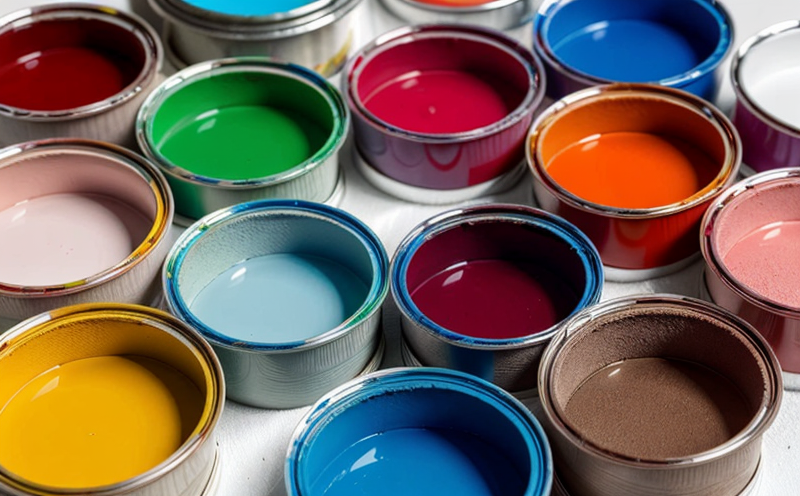EN 71-3 Mercury Content Testing in Paints
The European standard EN 71-3:2019 specifies the requirements and test methods for mechanical, chemical, biological, physical properties of materials used in toys. The third part focuses on specific migration limits for certain elements to ensure that these components are safe for children's use.
Mercury is one such element with stringent limitations. This service involves determining the concentration levels of mercury present in paints intended for use on toys or other children’s products, ensuring compliance with EN 71-3:2019. The testing process ensures that no hazardous amounts of mercury are released into the environment when the paint is exposed to normal use.
The analysis aims at detecting even trace amounts of mercury because exposure to this heavy metal can pose significant health risks, especially to young children who might put toys in their mouths. Regulatory authorities worldwide recognize the importance of such tests; hence compliance with these standards is essential for manufacturers and importers operating within European Union jurisdictions.
Our laboratory follows all relevant regulations meticulously during every step from sample collection through final analysis. We employ advanced analytical techniques like cold vapor atomic absorption spectrometry (CV-AAS) which provides accurate quantification of mercury down to parts per billion levels. Our team comprises seasoned professionals who understand both the technical aspects and regulatory requirements associated with toy manufacturing.
To prepare a paint sample for testing, we first ensure it represents an average cross-section of the product being analyzed. After thorough preparation, samples undergo rigorous examination using CV-AAS equipment calibrated according to international standards such as ISO 17025. Once results are obtained, they form part of comprehensive reports delivered directly to clients.
Compliance with EN 71-3 is crucial not only for avoiding potential legal issues but also enhancing brand reputation among consumers who value safety above all else. By offering reliable testing services aligned with this standard, our laboratory supports toy manufacturers in maintaining high standards throughout their production processes.
Why It Matters
The importance of mercury content testing cannot be overstated given its potential to cause severe health problems if ingested or absorbed. Children are particularly vulnerable due to their developing nervous systems, making it imperative that all materials used in toys meet strict safety criteria.
- Health Risks: Excessive exposure to mercury can lead to various adverse effects ranging from mild symptoms like irritability and tremors to severe conditions such as kidney damage and neurological disorders. In extreme cases, it may even result in death.
- Legal Requirements: Non-compliance with EN 71-3 could lead to substantial fines or bans on products within EU markets. Such penalties not only affect the company involved but also harm consumer trust leading to lost sales opportunities.
- Brand Image: A reputation for producing safe toys is invaluable in today’s competitive market where parents increasingly prioritize product safety when making purchasing decisions. Demonstrating adherence to international standards helps build this image and fosters customer loyalty.
In summary, ensuring low levels of mercury in paints used on toys is critical for protecting children's health while safeguarding business interests. Our testing service plays an essential role in achieving these objectives by providing accurate data backed by reliable analysis techniques.
Applied Standards
The primary standard governing this type of testing is EN 71-3:2019, which sets forth specific migration limits for various elements including mercury. Additionally, our laboratory adheres to other relevant international standards such as ISO 17025:2017 for quality management systems in testing and calibration laboratories.
When conducting tests according to EN 71-3, we ensure that all procedures comply with the specified parameters regarding sample preparation, extraction methods, and detection limits. This includes using appropriate solvents and ensuring proper dilution ratios if necessary before analysis by CV-AAS. The aim is always to obtain precise results reflecting real-world conditions under which toys will be used.
For instance, when testing paint samples, we simulate the type of exposure encountered during normal playtime by placing the painted surface in contact with simulated saliva or gastric juices for a specified period before measuring any released mercury. This approach ensures that our findings accurately reflect potential risks faced by children using these products.
In summary, applying correct standards guarantees consistency and reliability across all tests conducted at our facility, thereby providing clients with confidence in the accuracy of their results.





